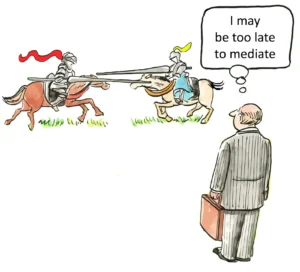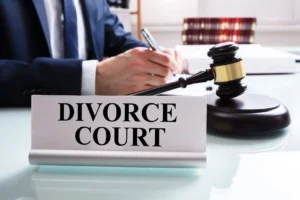How Video Marketing Can Transform Your Law Firm’s Growth
In today’s digital landscape, law firms face unprecedented competition for client attention. The legal profession, traditionally reliant on referrals and word-of-mouth marketing, now confronts a reality where potential clients first encounter attorneys through digital channels. Among these channels, video marketing has emerged as a particularly powerful tool for law firms seeking to differentiate themselves and drive growth. Despite its proven effectiveness, the American Bar Association’s 2020 Legal Technology Survey Report revealed that only about 24% of law firms currently utilize videos in their marketing strategy. This represents a significant missed opportunity, especially considering that video content dominates major social platforms and 90% of all internet traffic in 2024 stemmed from short-form videos.
The reluctance of many law firms to embrace video marketing is understandable. Legal professionals often worry about maintaining their dignity and adhering to ethical guidelines while creating engaging content. However, those who have successfully implemented video strategies report substantial returns on investment. As Jason Javaheri, co-founder of J&Y Law, notes, “By reallocating 25% of our marketing budget to video content, our engagement on platforms like YouTube and Facebook has more than doubled, with a 50% increase in video views across educational content”. Such results demonstrate that law firm video marketing can be both dignified and effective when executed properly.
The Power of Video in Legal Marketing
Video content offers law firms unique advantages that traditional marketing methods cannot match. Unlike text-based content, videos allow potential clients to see and hear attorneys directly, creating an immediate personal connection that builds trust. This human element is particularly valuable in the legal industry, where clients often make decisions based on their comfort level with an attorney. Videos effectively showcase an attorney’s expertise, communication style, and personality, giving viewers insight into what working with the firm might be like.
The statistical evidence supporting video’s effectiveness is compelling. Websites with video content are 53 times more likely to reach Google’s first page, significantly enhancing a law firm’s visibility. Furthermore, viewers retain 95% of a message when watching it in video format compared to just 10% when reading text. This improved information retention is especially valuable for law firms explaining complex legal concepts to potential clients. Videos also increase dwell time on websites, with pages featuring video content holding visitors’ attention 2.6 times longer than those without[10]. This extended engagement gives firms more opportunity to convert visitors into clients.
Legal marketing videos also offer exceptional versatility. They can be repurposed across multiple platforms, from a firm’s website to social media channels like YouTube, LinkedIn, Facebook, Instagram, and even TikTok. This multi-platform approach allows firms to reach different demographic groups where they naturally consume content. For instance, younger audiences might discover a firm through TikTok or Instagram Reels, while professional referral sources might engage with the same content on LinkedIn or YouTube.
Types of Videos That Drive Law Firm Growth
Law firms can leverage various video formats to achieve different marketing objectives. Understanding these formats and their specific purposes enables firms to create a comprehensive video strategy that addresses multiple aspects of the client journey.
Thought leadership videos establish attorneys as authorities in their practice areas. These videos typically feature lawyers discussing current legal trends, recent court decisions, or legislative changes affecting clients. By demonstrating expertise through these educational videos, attorneys build credibility and trust with potential clients. As noted by legal marketing experts, “Thought leadership videos bridge the gap between expertise and trust, providing clients with a direct connection to your firm’s knowledge and values”. These videos also improve search engine visibility for specific keywords that potential clients commonly search for.
Client testimonial videos provide powerful social proof that can influence potential clients’ decision-making. When viewers see and hear real clients describe positive experiences with a firm, it creates an emotional connection and builds trust. According to marketing research, law firms using video testimonials on landing pages see 80% higher conversion rates[2]. These videos are particularly effective because they allow potential clients to identify with others who have faced similar legal challenges and found success with the firm’s representation.
Explainer videos break down complex legal concepts into accessible, engaging content. These videos help potential clients understand legal processes, their rights, and what to expect when working with an attorney. By demystifying legal matters, firms remove barriers to client engagement and position themselves as helpful guides. Explainer videos can address frequently asked questions, outline practice areas, or walk viewers through common legal procedures. Their educational value establishes the firm as a resource rather than just a service provider.
Attorney profile videos humanize the firm by introducing the people behind the practice. These videos typically feature individual attorneys discussing their backgrounds, approaches to client service, and personal motivations for practicing law. By showcasing attorneys’ personalities and values, these videos help potential clients determine whether they would feel comfortable working with the firm. As one marketing expert explains, “When users see you on their screen, it’s almost like you’re having a conversation in person — which is great for strengthening your connection and letting your clients get to know you better”.
Platforms and Distribution Strategies
Effectively distributing video content requires understanding the unique characteristics and audiences of different platforms. A strategic approach to video distribution maximizes reach and engagement while maintaining consistency in messaging across channels.
YouTube remains the dominant platform for video content, with 90% of marketers using it for legal video marketing. As the second-largest search engine after Google, YouTube offers exceptional visibility potential and sophisticated targeting options. Law firms should create a dedicated channel with organized playlists for different practice areas or video types. YouTube’s longer format accommodates in-depth educational content and thought leadership videos. The platform also allows for detailed analytics, helping firms refine their video strategy based on performance data.
Social media platforms like Facebook, LinkedIn, Instagram, and TikTok each serve different purposes in a law firm’s video marketing strategy. LinkedIn is particularly valuable for B2B connections and referral networking, making it ideal for thought leadership content targeting other professionals. Facebook’s broad demographic reach makes it suitable for client testimonials and community-focused content. Instagram Reels and TikTok cater to younger audiences and excel at delivering quick legal tips in an engaging format. As Mia Mancinelli Cloud, founder of Cloud Law Firm, notes, “We will be targeting an increase in our budget on digital content while improving our video presence, especially on YouTube and LinkedIn”.
Law firm websites benefit tremendously from embedded videos. Including videos on landing pages can increase conversion rates by 80%. Strategic placement of videos throughout a website enhances user experience and extends visit duration. For example, attorney profile videos work well on bio pages, while practice area explainer videos belong on service pages. Website videos should include clear calls-to-action directing viewers toward consultation scheduling or contact forms. Additionally, proper video SEO implementation, including descriptive titles, tags, and transcripts, improves both user experience and search engine visibility.
Email marketing campaigns gain effectiveness when incorporating video content. Including video thumbnails in emails can increase click-through rates by 65%. While most email clients don’t support direct video playback, linking thumbnail images to hosted videos on landing pages creates an effective user journey. Video content in email nurture sequences helps maintain engagement with potential clients throughout their decision-making process. Educational videos are particularly valuable in this context, as they provide ongoing value to prospects while keeping the firm top-of-mind.
Production Considerations for Legal Videos
Creating professional-quality videos requires attention to technical details that impact how viewers perceive a law firm. While production quality matters, firms should focus on authenticity and value rather than perfect polish.
Equipment and setup decisions should align with a firm’s budget and goals. While professional production companies offer the highest quality, they also come with significant costs. Many firms successfully produce in-house videos using mid-range equipment. Essential components include a good camera (even modern smartphones can suffice), quality microphones for clear audio, proper lighting to ensure professional appearance, and a stable tripod or mount. Background considerations are equally important—clean, professional environments that reflect the firm’s brand create the right impression. Some firms designate a permanent recording space to maintain consistency and reduce setup time.
Content planning should precede any recording. Developing scripts or detailed outlines helps attorneys deliver clear, concise messages without rambling. However, reading directly from scripts often creates an unnatural delivery. Instead, attorneys should familiarize themselves with talking points and speak conversationally. Planning also involves determining optimal video length based on platform and content type. As a general guideline, “The ideal video length should be one to five minutes to maximize viewer interest”. Shorter videos typically perform better on social media, while educational content may justify longer formats.
Branding consistency across all videos reinforces firm identity. This includes visual elements like logos, color schemes, and typography, as well as consistent intro and outro segments. Maintaining a recognizable style helps viewers immediately identify content as belonging to the firm. However, branding elements should remain subtle enough not to distract from the main content. Professional thumbnails featuring the firm’s visual identity improve recognition and click-through rates on platforms like YouTube.
Ethical considerations must guide all aspects of legal video production. Law firms must adhere to state bar association rules regarding attorney advertising. This typically includes requirements for disclaimers, restrictions on certain claims, and guidelines about client testimonials. As one legal marketing expert advises, “All claims, statements, and representations made in the videos must be truthful, factual, and not misleading in any way. Avoid exaggerated or unsubstantiated claims about the firm’s services, results, or qualifications”. Client confidentiality must be strictly maintained, with proper releases obtained for any client appearances. When using dramatizations or reenactments, these should be clearly labeled to avoid misleading viewers.
Optimizing Legal Videos for Search Engines
For maximum impact, law firm videos must be discoverable by potential clients. This requires strategic optimization for both traditional search engines and platform-specific algorithms.
Keyword research forms the foundation of video SEO. Firms should identify terms potential clients use when searching for legal services in their practice areas. This includes both broad terms like “divorce lawyer” and long-tail phrases such as “how to beat a DUI if I didn’t blow”. Understanding search volume and competition levels for these terms helps prioritize content creation. Tools like TubeBuddy and YT Cockpit can assist in finding profitable keywords specifically for video platforms. As one SEO expert advises, “Find out the highest traffic, lowest competition, keywords in your geographic and practice areas”.
Metadata optimization significantly impacts video discoverability. This includes crafting compelling, keyword-rich titles that accurately describe content while enticing clicks. Descriptions should provide comprehensive information about the video, incorporating relevant keywords naturally. Tags help categorize content and should include both broad and specific terms related to the video’s subject matter. On YouTube, the first 100-150 characters of descriptions appear in search results, making this prime real estate for key information and calls-to-action.
Thumbnail creation deserves careful attention, as these images significantly influence click-through rates. Custom thumbnails should be visually appealing, clearly represent content, and include text overlays highlighting key benefits or questions addressed in the video. Consistent thumbnail styling across a channel improves brand recognition. High-contrast images with clear focal points perform best, especially when viewed on mobile devices. As noted by video marketing experts, “Thumbnails are small images that appear in search results next to your video title. They should be eye-catching, visually appealing, and accurately depict the video’s content”.
Transcripts and closed captions serve multiple purposes in video optimization. They make content accessible to viewers with hearing impairments and those watching without sound. Search engines can index this text, improving content discoverability. Transcripts also provide material for creating additional content like blog posts or social media snippets. Some platforms, including YouTube, can automatically generate captions, though these typically require editing for accuracy. Properly formatted transcripts can also be submitted to search engines as part of video sitemaps, enhancing indexing.
Measuring Video Marketing Success
Effective video marketing requires ongoing analysis and optimization based on performance metrics. Understanding what data to track and how to interpret it enables law firms to refine their strategies for maximum impact.
Key performance indicators (KPIs) vary depending on video goals and platforms. View count provides a basic measure of reach but offers limited insight into engagement quality. Watch time and retention rate reveal how much of each video viewers actually consume, helping identify content that maintains interest. Engagement metrics like likes, comments, and shares indicate how viewers respond to content. Click-through rates on calls-to-action measure how effectively videos drive desired actions. For law firms, the ultimate KPI is lead generation—how many consultation requests or contact form submissions result from video views.
Platform-specific analytics provide detailed insights into video performance. YouTube Analytics offers comprehensive data on audience demographics, traffic sources, and viewing patterns. Social media platforms provide metrics on reach, engagement, and audience characteristics. Website analytics tools track how embedded videos impact site performance, including time on page and conversion rates. Email marketing platforms measure how video thumbnails affect open and click-through rates. Integrating these various data sources creates a complete picture of video marketing effectiveness across channels.
Attribution modeling helps firms understand how videos contribute to the client acquisition journey. Most clients interact with multiple marketing touchpoints before contacting a firm, making it challenging to isolate video’s specific impact. Multi-touch attribution models assign appropriate credit to videos within this journey. For example, a potential client might discover a firm through a YouTube video, visit the website to watch more content, and finally convert after receiving an email containing another video. Proper attribution ensures firms recognize video’s role in this process.
Continuous improvement strategies leverage data insights to enhance video effectiveness. A/B testing different video elements—such as thumbnails, titles, or calls-to-action—reveals what resonates best with audiences. Content calendars should be adjusted based on performance data, allocating more resources to successful video types. Technical aspects like video length, production quality, and delivery style can be refined based on retention and engagement metrics. As one marketing expert notes, “By following these ethical considerations and best practices, you can create video content that not only attracts new clients but also strengthens your reputation as a trustworthy and ethical lawyer”.
Short-Form Video Strategies for Law Firms
The explosive growth of short-form video platforms presents unique opportunities for law firms to reach new audiences with concise, engaging content. These platforms favor authentic, educational material that provides immediate value while maintaining professional standards.
TikTok has emerged as a surprisingly effective channel for legal professionals. The platform’s algorithm rewards engaging, educational content regardless of follower count, allowing even new accounts to achieve significant visibility. Successful legal TikTok content typically includes “Legal Tips” series focusing on specific practice areas, breaking down complex concepts into 15-30 second segments. Attorneys can address trending legal topics and current events, using trending sounds or formats while providing expert commentary. Behind-the-scenes glimpses of law firm culture humanize the practice and build trust with potential clients. The informal nature of TikTok allows attorneys to showcase personality while maintaining professional credibility.
Instagram Reels offers law firms a more polished platform for short-form content. This format combines the engagement potential of short videos with Instagram’s professional aesthetic. Law firms can create visual case studies presenting simplified versions of successful cases using engaging visuals and clear text overlays. Legal news updates delivered in 30-second clips with professional graphics perform well on this platform. Brief client success stories or reenactments of common legal scenarios help potential clients envision working with the firm. The platform’s professional formatting tools and filters create polished content that maintains brand standards while engaging viewers.
YouTube Shorts provides another avenue for short-form legal content. This format benefits from integration with YouTube’s powerful search and recommendation algorithms. Educational legal content under 60 seconds can reach both existing subscribers and new audiences through the Shorts feed. The format works well for answering specific legal questions, explaining recent legal developments, or providing quick practice area overviews. Unlike other short-form platforms, YouTube Shorts can serve as entry points to longer, more detailed content on a firm’s main channel, creating a content ecosystem that serves various audience preferences.
Content repurposing strategies maximize the value of short-form video production. A single recording session can yield content for multiple platforms with appropriate editing and formatting. For example, a 10-minute educational video can be edited into several 30-60 second clips highlighting key points for short-form platforms. These clips can then direct viewers to the full video for more comprehensive information. This approach creates a content funnel that moves potential clients from brief, attention-grabbing snippets to more detailed educational material and ultimately to consultation requests. As noted by marketing experts, “Short-form content in video marketing has gained remarkable popularity in 2024, making it a dominant trend among digital marketing trends for law firms”.
Advanced Video Marketing Techniques
As law firms become more sophisticated in their video marketing efforts, advanced techniques can further enhance engagement and conversion rates. These approaches leverage technology and interactive elements to create more compelling viewer experiences.
Interactive video features transform passive viewing into active engagement. Call-to-action overlays prompt viewers to take specific steps, such as scheduling consultations or downloading resources. Interactive elements like quizzes and polls maintain viewer attention while gathering valuable data about audience interests and needs. Some platforms support clickable elements within videos that direct viewers to relevant practice area pages or contact forms. These interactive components create clear pathways from video consumption to client conversion. As marketing experts note, “Interactive video features including call-to-action overlays, quizzes, polls, and options to schedule consultations are transforming how viewers are converted into clients”.
AI-driven personalization enhances video relevance for individual viewers. Recommendation algorithms suggest related content based on viewing history, keeping potential clients engaged with a firm’s video library. Dynamic video elements can adjust based on viewer demographics or behavior, creating more personalized experiences. Automated video creation tools help firms produce customized content at scale, addressing specific practice areas or legal questions. While maintaining ethical standards, firms can leverage data insights to deliver the most relevant content to each potential client, increasing engagement and conversion rates.
Immersive technologies like augmented reality (AR) and virtual reality (VR) offer new possibilities for legal video marketing. Virtual office tours give potential clients a sense of the firm’s environment before visiting in person. AR applications can overlay explanatory information on legal documents or procedures, making complex concepts more accessible. Some firms create immersive case studies that allow viewers to experience scenarios from different perspectives. While these technologies require greater investment, they create memorable experiences that differentiate a firm from competitors. As one trend analysis notes, “AI-driven personalization and immersive experiences through AR and VR also playing a significant role” in the future of legal video marketing.
Live video streaming builds real-time connections with potential clients. Platforms like YouTube Live, Facebook Live, and LinkedIn Live allow attorneys to host Q&A sessions addressing common legal questions. Live webinars on timely legal topics demonstrate expertise while allowing direct interaction with viewers. Behind-the-scenes live streams of firm events or community involvement humanize the practice. The authentic, unscripted nature of live video creates trust, while the interactive element allows immediate response to viewer questions and concerns. Recording these live sessions provides additional content for later distribution across other channels.
Ethical Considerations in Legal Video Marketing
While video marketing offers tremendous opportunities for law firms, it must be conducted within the ethical framework governing legal advertising. Understanding and adhering to these guidelines ensures that video content builds rather than damages a firm’s reputation.
Advertising regulations vary by jurisdiction but generally require truthfulness and transparency. The American Bar Association and state bar associations establish specific rules for legal advertising that apply to video content. These typically include requirements for disclaimers, restrictions on certain claims, and guidelines regarding client testimonials. As one legal ethics expert advises, “Each state has specific rules and regulations governing lawyer advertising and marketing practices. Familiarize yourself with the applicable rules in your jurisdiction and ensure that your video content complies with them”[5]. Firms should implement review processes to ensure all video content meets these standards before publication.
Client confidentiality remains paramount in video marketing. Attorneys must obtain proper written consent before featuring clients in testimonial videos or case studies. Even with consent, videos should avoid revealing specific details that could identify clients in sensitive matters. Dramatizations or reenactments can effectively illustrate legal concepts without compromising confidentiality, but these must be clearly labeled as such to avoid misleading viewers. As ethical guidelines state, “If the video includes dramatizations, fictional scenarios, or visual effects, these must be disclosed to avoid misleading potential clients about the firm’s services or qualifications”.
Avoiding misleading claims protects both potential clients and the firm’s reputation. Videos should never guarantee specific outcomes or make comparisons to other attorneys that cannot be substantiated. Claims about expertise or specialization must comply with bar association rules regarding such designations. Past case results can be discussed only with appropriate context and disclaimers noting that outcomes vary based on specific circumstances. As one ethical guideline states, “Law firms must uphold the highest standards of truthfulness and transparency in their video content”.
Professional decorum in video presentation maintains the dignity of the legal profession. While videos should be engaging and personable, they should avoid sensationalism or inappropriate humor that could diminish respect for the legal system. Attorneys should present themselves professionally in appearance and demeanor, reflecting how they would conduct themselves in court or client meetings. As ethical guidelines note, “Video marketing should uphold the dignity and professionalism expected of lawyers. Avoid using sensationalism, inappropriate humor, or tactics that could be perceived as demeaning or disrespectful to the legal profession or the justice system”.
Integrating Video with Overall Marketing Strategy
For maximum effectiveness, video marketing should be integrated with a law firm’s broader marketing efforts rather than existing as a standalone initiative. This integration creates a cohesive client experience across all touchpoints.
Content synergy between video and other marketing materials strengthens messaging consistency. Blog posts can elaborate on topics introduced in videos, providing more detailed information for interested viewers. Email campaigns can feature video thumbnails linking to relevant content, increasing engagement rates. Social media posts can promote video content with compelling excerpts or quotes. Website practice area pages benefit from embedded videos explaining services in an engaging format. This multi-channel approach reinforces key messages across platforms, creating a comprehensive marketing ecosystem.
Lead nurturing sequences benefit significantly from video integration. Initial awareness videos introduce potential clients to the firm and its services. These videos can be followed by educational content that addresses specific legal concerns relevant to the viewer’s situation. Consideration-stage videos might showcase attorney expertise through case studies or detailed explanations of legal processes. Decision-stage videos often feature client testimonials and specific service explanations that help potential clients overcome final objections.
Video content is particularly effective for nurturing leads because it creates multiple touchpoints throughout the client’s decision-making journey. As Philip Fairley of The Rainmaker Institute notes, “Your nurturing videos will generate more revenue for any law firm than any other video.” This is because not all potential clients are ready to schedule a consultation immediately after their first interaction with your firm. The sales cycle varies significantly by practice area—from potentially six months for estate planning to just two days for criminal defense.
For maximum effectiveness, nurturing videos should address specific sub-practice areas rather than broad categories. For example, instead of simply creating content about “family law,” develop videos addressing specific concerns like child custody arrangements, property division in divorce, or spousal support calculations. This targeted approach demonstrates your firm’s depth of knowledge while addressing the exact issues potential clients are facing.
Each video in the nurturing sequence should include a clear call-to-action that guides viewers toward the next step in their journey. These CTAs should be present for 10-15 seconds at the end of your content and might include invitations to download resources, subscribe to newsletters, or schedule initial consultations. By strategically implementing video throughout the nurturing process, law firms can maintain engagement with potential clients until they’re ready to make a hiring decision, ultimately increasing conversion rates and practice growth.
Measuring Video Marketing Success for Law Firms
Effective video marketing requires ongoing analysis of performance metrics to optimize strategy and maximize return on investment. By tracking key indicators across platforms, law firms can refine their approach and allocate resources more effectively.
Key Performance Indicators vary depending on video goals and distribution channels. View counts provide basic reach metrics, while watch time and retention rates reveal content quality and audience engagement. For lead generation videos, conversion metrics like consultation requests or contact form submissions directly measure business impact. Client acquisition cost (CAC) compared against client lifetime value helps determine overall ROI for video marketing efforts.
Platform-Specific Analytics offer valuable insights into audience behavior and preferences. YouTube Analytics provides detailed demographic information, traffic sources, and engagement patterns. Social media platforms track reach, engagement rates, and audience characteristics. Website analytics measure how embedded videos impact site performance metrics like time on page and bounce rates. Email marketing platforms reveal how video thumbnails affect open and click-through rates.
By consistently analyzing these metrics, law firms can identify their most effective video types and topics, optimize distribution strategies, and continuously improve their video marketing approach to generate more qualified leads and drive practice growth.
Citations:
- Video Marketing Guide for Lawyers
- Why Law Firms Need Video Content
- Ultimate Guide to Video Marketing
- Ethics in Lawyer Video Marketing
- Hiring SEO Company for Law Office
- Essential Law Firm Video Trends
- Future of Video Marketing in Law
- Legal Marketing Videos for Law Firms
- Video Marketing for Law Firms by WebFX
- 2024 Video Marketing Trends for Law Firms
- Future of Legal Marketing
- Best Legal Explainer Videos
- Lawyer Video Marketing Resources
- Video Marketing Strategies for Lawyers
- Best Practices for Attorney Video Marketing
- 10 Video Marketing Examples for Lawyers
- Attorneys Leveraging Video Marketing
- Video Marketing Tutorial for Law Firms
- Video Marketing Discussion for Law Firms
- 10 Tips for Law Firm Video Marketing
- Elite Video Marketing for Lawyers
- Video Marketing Tips for Attorneys
- Video Marketing Strategies for Lawyers
- Power of Video Marketing Webinar
- 12 Ways Law Firms Use Video
- Branding Law Firms with Video
- Complete Guide to Lawyer Advertising Rules
- Overcoming Objections in Video Marketing
- Lawyer Advertising Rules by Clio
- Ethics in Digital Marketing for Law Firms
- Getting Started with Video Marketing
- Video Marketing Services for Lawyers
- Do Law Firms Need Video Marketing
- Does Video Marketing Work for Law Firms
- Law Firm SEO Keyword Research
- Video Marketing Playlist for Lawyers
- SEO Keywords for Lawyers
- Keyword Research Guide for Attorneys
- SEO Resources for Lawyers
- Video Marketing 101 for Law Firms
- Law Firm Google Ads Management
- 11 Tips to Optimize Video SEO
- 2025 SEO Game Plan for Law Firms
- Lawyer Video SEO Guide
- Legal Marketing Trends by SEO.co
- Video Marketing Strategies for 2024
- 2025 Legal Marketing Trends
- Top Digital Marketing Trends for Lawyers
- Leveraging Video Content for Law Firms
- 8 Essential Videos for Law Firms
- Shooting Legal Video for Law Firms
- Law Firm Content Marketing Trends 2025
- Enhancing Law Firm Presence with Video
- Lawyers Video Marketing Guide
- Video Marketing Mistakes for Lawyers
- Best Practices for Video Marketing
- Targeting Legal Clients with Keywords
- Video Marketing Tips for Attorneys
- SEO Keyword Research for Attorneys
- SEO Strategies for Lawyers




















